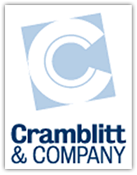Your story: kicked to the curb
May 29th, 2009 | 1 Comment
I know I promised a “PR in Practice” posting on press releases this week. But, just thinking about it put me off into some dangerous and angry mind currents.
You’ve probably experienced this before: You’re at a party and someone you don’t know all that well (maybe a soon-to-be-ex-girlfriend or -boyfriend or a casual friend) says, “Well, the thing about Bob…” and proceeds to characterize you in a way that is unfathomable to you. You’re angry, but your protests are too late – you’ve been third-party characterized.
In a bigger way, that’s what a lot of companies are doing – letting others tell their stories for them. In the process, one of the most precious commodities of the company – its identity – is lost, misrepresented or compromised. How basic of a sin is that? Yet, companies let it happen all the time.
They let poorly written press releases and poorly informed PR people deliver watered-down, clichéd versions of their story.
They copy the stories of other, bigger companies, completely undermining the advantages of their uniqueness.
They tarnish their stories with hype and puffery.
They communicate with benign dishonesty, but dishonesty just the same.
They believe their own myths and foist them on the public.
They put all information dissemination in the hands of the media, even though they could likely tell the story better and more accurately if they spoke directly to their communities.
They don’t talk with their customers or use customers’ stories to help define the company and engender trust.
They never taint their company’s steeliness with an ounce of warmth or personality.
They concentrate on product positioning, engineering and false branding while kicking their central story to the curb.
O.K., I feel a bit better. The end-of-the-week martini is about an hour away. If you engage in the above practices, I hope you’re slightly uncomfortable. But, probably not: Your story most likely left the building a long time ago.

